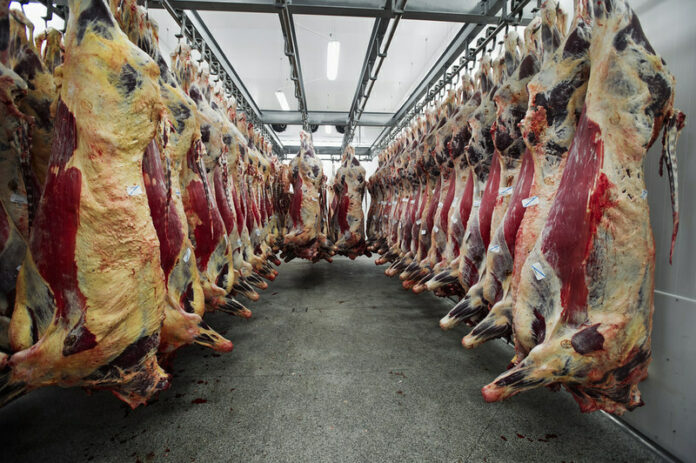Lean hogs made a strong recovery after experiencing a decline on Tuesday, showcasing the volatility of the market. This turnaround in the lean hog futures market was a welcome sight for investors and traders alike. The Chicago Mercantile Exchange (CME) saw live and feeder cattle futures reaching life of contract highs on Wednesday. This surge in prices was attributed to fund buying, with analysts noting the aggressive net long position taken by funds.
According to a report from Reuters, CME February live cattle futures settled up 3 cents at 200.05 cents per pound, while the April contract, now the most actively traded, ended up 2.450 cents at 199.775 cents per pound. All contracts reached lifetime highs, indicating a bullish trend in the market. Similarly, CME March feeder cattle settled up 5.825 cents at 273.075 cents per pound, with both January and March contracts reaching life of contract highs.
Analyst and author of The Beef newsletter, Cassie Fish, commented on the significant fund buying in cattle futures, stating that it was unprecedented in her career. This surge in fund buying propelled prices higher, creating a positive momentum in the market. However, despite the bullish sentiment in the cattle futures market, prices for wholesale beef weakened, as analysts predicted a seasonal decline in the coming months.
The US Department of Agriculture’s boxed-beef index for choice cuts fell slightly on Wednesday afternoon, indicating a slight downturn in beef prices. This decline in prices put pressure on packers to maintain their margins, with some working to produce just enough meat to meet demand. Beef packer margins fell on Wednesday compared to previous days, highlighting the challenges faced by industry players in managing costs and profitability.
Additionally, traders were keeping a close eye on the USDA’s decision to resume cattle imports from Mexico. The US had blocked shipments from Mexico in November due to the discovery of the New World screwworm pest. The anticipation of a potential resumption of imports added another layer of complexity to the market dynamics, as traders weighed the impact on supply and demand.
In the lean hogs market, futures bounced back after the previous day’s decline. CME April hogs settled up 0.575 cent at 87.275 cents per pound, while front-month February hogs rose 0.275 cent to end at 81.475 cents per pound. This rebound in lean hog futures demonstrated the resilience of the market, as investors reacted to changing market conditions and news developments.
Overall, the livestock futures market experienced notable movements and changes, driven by a combination of factors including fund buying, market sentiment, and external developments such as trade restrictions. These fluctuations underscore the dynamic nature of the agricultural commodities market and the importance of staying informed and agile in order to navigate the challenges and opportunities presented by this ever-evolving landscape.




